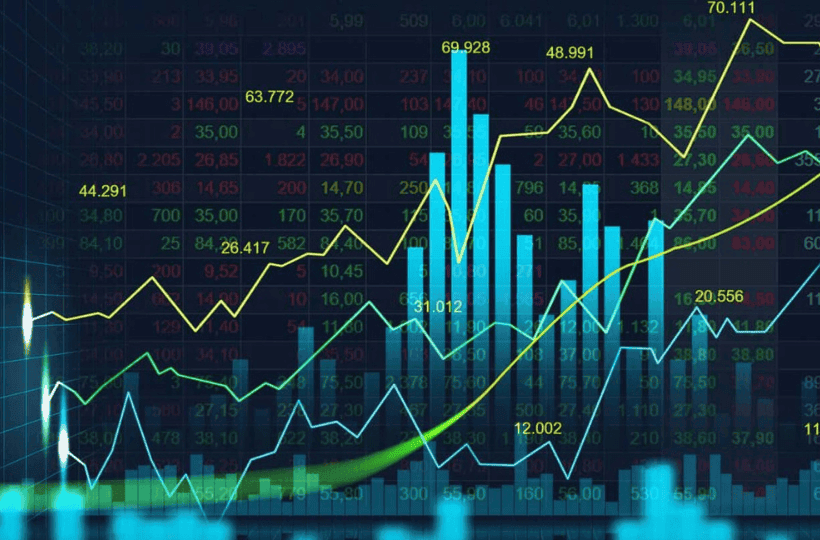The Power of Backtesting in Forex Trading

Read time: 10 minutes.
Developing a reliable and effective trading strategy is essential. One of the most powerful tools at a trader’s disposal is backtesting – a process in which you can evaluate a trading strategy’s potential profitability and consistency against historical market data.
This process helps identify strengths and weaknesses in your strategies, enabling you to make necessary adjustments before trading real money.
Given the volatile nature of Forex trading, especially in currency pairs like AUD/USD and EUR/NZD, backtesting is essential for gaining a competitive edge. These currency pairs are known for their dynamic movements, influenced by various factors such as economic indicators, geopolitical events, and central bank policies. By backtesting your strategy on these pairs, you can better understand how your approach might perform under different market conditions, providing you with the confidence to execute trades in real time.
Contents
- Benefits of Backtesting
- How to Conduct Effective Backtesting
- Common Backtesting Pitfalls
- Integrating Backtesting into Your Trading Routine
- Conclusion
Key Takeaways
- Backtesting is a critical process that involves evaluating a trading strategy against historical data to determine its effectiveness and reliability.
- It offers a risk-free environment to test strategies, enabling traders to gain valuable insights into performance metrics and refine their approach without financial loss.
- Avoid common backtesting pitfalls such as overlooking varying market conditions, ignoring psychological impacts, and neglecting the importance of forward testing.
- Integrating backtesting into your trading routine ensures continuous improvement of strategies, promotes a data-driven approach, and helps build trading confidence.
Benefits of Backtesting
1. Risk-Free Strategy Evaluation
As mentioned, one of the most significant advantages of backtesting is the ability to evaluate a trading strategy without risking real capital. In live trading, every decision carries financial risk, and mistakes can be costly. Backtesting, however, offers a simulated environment where you can see how your strategies would have performed in real market conditions.
As an example, imagine developing a new trading strategy based on technical indicators such as moving averages and RSI. By backtesting this strategy against historical data from the AUD/USD pair over the past five years, you can see how it would have fared during various market phases – whether trending, ranging, or volatile.
2. Performance Insights
Backtesting provides insights into invaluable performance metrics that provide a deeper understanding of a strategy's effectiveness. These insights include key metrics such as win/loss ratios, maximum drawdowns, average returns, and the strategy's performance during different market conditions.
For example, a backtest might reveal that your strategy performs exceptionally well during trending markets but struggles in sideways markets. With this information, you can tweak your approach to improve its performance in different conditions.
Backtesting also allows you to assess the strategy's versatility by testing it across different timeframes and market environments. This allows you to not only determine the best market conditions for your strategy but also the most effective chart time frame.
3. Cost-Effective Learning
The financial markets are unforgiving, and mistakes can be costly. Losses can be discouraging and detrimental to your trading psychology and, ultimately, your account. Backtesting, on the other hand, offers a cost-effective way to learn from mistakes without incurring actual losses.
This allows you to identify potential pitfalls, such as poor entry or exit points, and refine your strategy accordingly. In doing so, you avoid the financial costs associated with real-world trading errors.
Additionally, backtesting can reveal hidden costs in your strategy, such as slippage and commissions, which can significantly impact your profitability. Understanding these costs upfront helps you make more informed decisions, such as choosing a broker with lower trading fees or adjusting your trade sizes to minimise slippage.
We highly recommend you read our post on the real cost of trading here.
4. Confidence Building
Confidence is a critical component of successful trading. Without confidence in your strategy, it’s challenging to stick to your trading plan, especially during periods of drawdown or market volatility. Backtesting allows you to build confidence by providing yourself with evidence that your strategy has performed well in the past.
After backtesting your strategy, you might find that it consistently generates positive returns over several years of historical data. This allows you to execute your strategy in live trading with confidence, knowing that it has been tested and proven to work. This also includes major market events – such as the 2008 financial crisis or the Brexit referendum – allowing you to be prepared for any major market events in the future.

How to Conduct Effective Backtesting
1. Choose Reliable and Comprehensive Historical Data
The quality of your backtesting results heavily depends on the quality of the historical data you use. It’s essential to choose a reliable data source that provides comprehensive and accurate data, including bid/ask prices, spreads, and market conditions.
For instance, if you’re backtesting a strategy on the AUD/NZD pair, you’ll need historical data that covers various market conditions, such as periods of low liquidity or high volatility. This ensures that your backtesting results are reflective of real market conditions and not skewed by inaccurate or incomplete data.
2. Select Appropriate Timeframes Covering Various Market Conditions
You need to ensure that your data covers a sufficient time frame to test your strategy effectively. If you’re developing a long-term trading strategy, backtesting on at least 10 years of historical data is recommended. This provides a broader perspective on how your strategy would have performed in trending and ranging markets during different market phases over the long-term.
The relevance of the time frame to your strategy is important in order to achieve the most accurate results. For example, a day trader might backtest their strategy on 1-minute or 5-minute charts, whereas a swing trader might backtest on daily or weekly charts.
3. Account for All Trading Costs, Including Slippage and Commissions
As mentioned earlier, there are other costs to consider in trading other than losing trades, and backtesting is no different. To obtain accurate results, it’s essential to account for all trading costs, including slippage, commissions, and spreads. These costs can significantly impact your strategy’s profitability and ignoring them can lead to an overestimation of your strategy’s success.
These additional costs affect all styles of trading – spreads and slippage can quickly eat up a day trader’s profits, and overnight swap rates over a sustained period of time can reduce a swing trader’s overall profit. By incorporating these costs into your backtesting, you can get a more realistic picture of your strategy’s potential performance.
4. Use Proper Risk Management
Risk management is a critical component of any trading strategy, and it should be an integral part of your backtesting process. Proper risk management ensures that you’re not risking more than you can afford to lose on any single trade, helping to protect your trading capital.
For example, when backtesting, ensure you incorporate stop-loss and take-profit levels to assess how they impact your strategy’s performance. You might find that adjusting your stop-loss levels slightly improves your overall risk-to-reward ratio, leading to better long-term results.
Additionally, consider position sizing as part of your risk management strategy. For instance, using a fixed percentage of your trading capital for each trade can help you manage risk more effectively. Backtesting different position sizing methods can provide insights into which approach works best for your trading style.
5. Avoid Curve Fitting and Data Dredging
Curve fitting, also known as data dredging, is a common pitfall in backtesting that occurs when a strategy is overly optimised to fit historical data. While this might result in impressive backtesting results, it often leads to poor performance in live trading, as the strategy is tailored to past data rather than being robust enough to handle future market conditions.
For example, you might develop a strategy that performs exceptionally well on the EUR/NZD pair during a specific time period. However, if the strategy is too tightly fitted to this historical data, it may fail when applied to different market conditions or time frames.
To avoid curve fitting, focus on creating a strategy that works well across different market conditions and time frames. Instead of optimising your strategy to maximise historical profits, aim for a balanced approach that considers various factors, such as risk management and market volatility. This ensures that your strategy is more likely to succeed in live trading.

Common Backtesting Pitfalls
1. Overlooking Market Conditions
One of the most common mistakes in backtesting is overlooking the impact of different market conditions on a strategy’s performance. Markets are dynamic, and a strategy that works well in one market environment might fail in another.
Consider backtesting your strategy on currency pairs during different market phases, such as high volatility periods, ranging markets, and low liquidity conditions. This helps you understand how your strategy adapts to changing market conditions and allows you to make necessary adjustments to improve its performance.
2. Ignoring Psychological Factors
Whilst backtesting provides valuable technical insights, it doesn’t account for the psychological pressures of live trading. Emotions such as fear, greed, and overconfidence can significantly impact trading decisions, leading to deviations from your trading plan.
For example, a backtested strategy might show excellent results, but when applied in live trading, you might find it difficult to stick to the plan due to emotional factors. This is why it’s important to complement backtesting with forward testing or real-time simulations on a demo account to experience the psychological challenges of live trading.
Forward testing provides a more realistic environment to assess how you react to market movements and psychological pressures. By combining backtesting with forward testing, you can develop a more comprehensive understanding of your strategy’s performance and your ability to execute it under real-world conditions.
3. Neglecting to Forward Test
After completing a thorough backtest, the next logical step is forward testing – testing your strategy in real-time using a simulated trading environment. Forward testing helps validate the results obtained from backtesting and ensures that your strategy holds up under live market conditions.
For example, after backtesting your strategy on the AUD/USD pair, you might move on to forward testing by executing simulated trades on a demo account. This allows you to observe how the strategy performs in real-time, taking into account factors such as slippage, order execution, and market psychology.
Forward testing also helps identify any issues that may not have been apparent during backtesting, such as execution delays or unexpected market reactions. By incorporating forward testing into your strategy development process, you can gain a more realistic idea of the strategy’s effectiveness.
4. Bias in Strategy Development
Bias in strategy development is another common pitfall in backtesting. Confirmation bias, where traders subconsciously look for data that supports their pre-existing beliefs, can lead to skewed backtesting results and overconfidence in a strategy’s success.
For example, you might develop a strategy based on a specific technical indicator that you believe is highly effective. However, if you only test the strategy on historical data that supports your belief, you might overlook its weaknesses in other market conditions.
To avoid bias, it’s important to remain objective in your approach and test your strategy across a wide range of market conditions and timeframes. You can read more about the psychological aspects of trading here.

Integrating Backtesting into Your Trading Routine
1. Regular Strategy Updates
The forex market is constantly evolving, and trading strategies that work today may not be effective tomorrow. To stay ahead of the curve, it’s essential to regularly update your strategies with the latest market data and insights.
For example, if you’ve been trading a specific currency pair for several years, you might notice changes in market behaviour due to factors such as new economic policies, shifts in global trade dynamics, or changes in central bank interest rates. By regularly updating your backtesting data and incorporating these changes into your strategy, you can ensure that your approach remains relevant and effective.
Consider re-testing your strategy periodically to ensure that it continues to perform well under current market conditions – especially after significant changes in the relevant currency’s economy or government.
2. Continuous Refinement
Backtesting should not be a one-time exercise but an ongoing process of continuous refinement. As you gain more experience and insights from your trading activities, you can use backtesting to further fine-tune your strategies and improve their performance.
After gaining more trading experience, you might notice that certain patterns or market behaviours are more predictive of future price movements. By incorporating these insights into your backtesting process, you can refine your strategy to better capitalise on future opportunities.
Continuous refinement also involves staying up to date with new trading tools, techniques, and market trends. As the financial markets evolve, more and more resources and tools become available to traders. Some of which you might find are beneficial to your strategy or trading style.
3. Testing New Ideas
As we touched on earlier, backtesting provides a safe and controlled environment to experiment with new trading ideas without the risk of losing capital. Whether you’re exploring new technical indicators, adjusting your entry and exit criteria, or testing different risk management techniques, backtesting allows you to evaluate these ideas objectively.
Testing new ideas through backtesting also encourages innovation and creativity in your trading approach. Instead of relying solely on conventional strategies, you can explore new methodologies and discover unique approaches that better align with your trading style and goals.
4. Building a Data-Driven Approach
Incorporating backtesting into your trading routine fosters a data-driven mindset, where trading decisions are based on empirical evidence rather than intuition or emotion. This approach leads to more consistent and successful trading outcomes, as it allows you to make informed decisions based on historical performance data.
By analysing the results of your back tests, you can identify patterns and trends that are statistically significant and use this information to guide your trading decisions. This data-driven approach helps you avoid common trading pitfalls, such as chasing losses or making impulsive decisions and provides you with the true performance potential of your strategy.
A data-driven approach encourages a systematic and disciplined trading process. By adhering to a well-defined strategy that has been thoroughly backtested, you can reduce the impact of emotions on your trading decisions and improve your overall performance.
Conclusion
Backtesting is an indispensable tool in the development and refinement of Forex trading strategies. By providing a risk-free environment to evaluate the effectiveness of your strategies, backtesting helps build confidence, improve performance, and foster a data-driven approach to trading.
Incorporating backtesting into your trading routine is essential if you want to stay competitive in the ever-evolving forex market. Whether you’re a novice trader looking to develop your first strategy or an experienced trader seeking to refine your approach, backtesting offers invaluable insights that can help you navigate the complexities of the Forex market with greater precision and confidence.
As you continue to develop your trading skills, make backtesting a regular part of your routine. The insights gained from backtesting will empower you to trade with greater confidence and discipline, ultimately leading to more successful and profitable trading outcomes. Don’t wait—start incorporating backtesting into your trading process today and unlock the full potential of your trading strategies.
The information provided in this article is for educational and informational purposes only. Backtesting, while a useful tool, does not guarantee future results
We’ll never share your email with third-parties. Opt-out anytime.